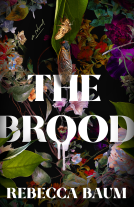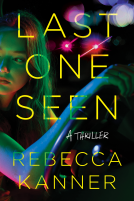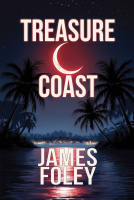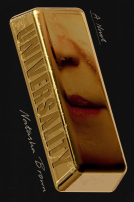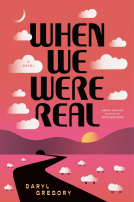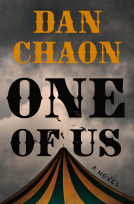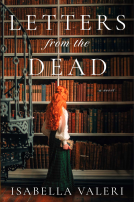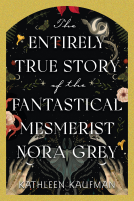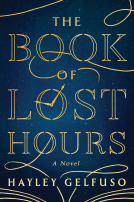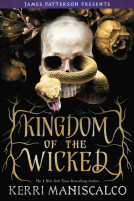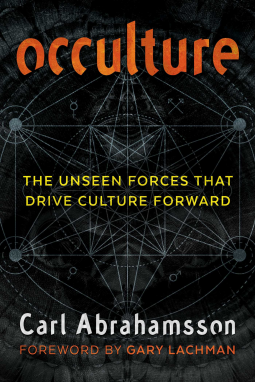
Occulture
The Unseen Forces That Drive Culture Forward
by Carl Abrahamsson
This title was previously available on NetGalley and is now archived.
Send NetGalley books directly to your Kindle or Kindle app
1
To read on a Kindle or Kindle app, please add kindle@netgalley.com as an approved email address to receive files in your Amazon account. Click here for step-by-step instructions.
2
Also find your Kindle email address within your Amazon account, and enter it here.
Pub Date Mar 06 2018 | Archive Date Feb 05 2018
Inner Traditions | Park Street Press
Talking about this book? Use #Occulture #NetGalley. More hashtag tips!
Description
• Examines key figures behind esoteric cultural developments, such as Carl Jung, Anton LaVey, Paul Bowles, Aleister Crowley, and Rudolf Steiner
• Explores the history of magic as a source of genuine counter culture and compares it with our contemporary soulless, digital monoculture
• Reveals how the magic of art can be restored if art is employed as a means rather than an end and offers strategies to rekindle intuitive creativity
Art, magic, and the occult have been intimately linked since our prehistoric ancestors created the first cave paintings some 50,000 years ago. As civilizations developed, these esoteric forces continued to drive culture forward, both visibly and behind the scenes, from the Hermetic ideas of the Renaissance, to the ethereal worlds of 19th century Symbolism, to the occult interests of the Surrealists.
In this deep exploration of “occulture”--the liminal space where art and magic meet--Carl Abrahamsson reveals the integral role played by magic and occultism in the development of culture throughout history as well as their relevance to the continuing survival of art and creativity. Blending magical history and esoteric philosophy with his more than 30 years’ experience in occult movements, Abrahamsson looks at the phenomena and people who have been seminal in modern esoteric developments, including Carl Jung, Anton LaVey, Paul Bowles, Aleister Crowley, and Rudolf Steiner.
Showing how art and magic were initially one and the same, the author explores the history of magic as a source of genuine counter culture and compares it with our contemporary soulless, digital monoculture. He reveals how the magic of art can be restored if art is employed as a means rather than an end--if it is intense, emotional, violent, and expressive--and offers strategies for creating freely, magically, even spontaneously, with intent unfettered by the whims of trends, a creative practice akin to chaos magick that assists both creators and spectators to live with meaning. He also looks at intuition and creativity as the cornerstones of genuine individuation, explaining how insights and illuminations seldom come in collective forms.
Exploring magical philosophy, occult history, the arts, psychology, and the colorful grey areas in between, Abrahamsson reveals the culturally and magically transformative role of art and the ways the occult continues to transform culture to this day.
A Note From the Publisher
This is a PDF and not available on Kindle
Available Editions
| EDITION | Other Format |
| ISBN | 9781620557037 |
| PRICE | $18.99 (USD) |
| PAGES | 256 |
Featured Reviews
The term 'occulture' is of course an amalgamation of the two words, 'occult' and 'culture' and how occult ideas have influenced the creative arts in recent decades. The writer, Abrahamsson, is in a position to know, having been an active contributor for the underground eighties Temple ov Psychic Youth, linked to Genesis P-Orridge and Psychic TV.
There are chapters on Crowley, La Vey, Steiner and Jung and how each have created lasting awareness-raising memes. Every man and woman is a star. And so on.
Magic is defined as the use of will to make things happen. The importance of music (La Vey) is emphasised as helping to create the ambience and passion needed to generate this will. It also leads to the prolific creation of music and there are many artists in this field influenced by Crowley for example, not mentioned by Abrahamsson in this collection of essays
Occulture can and does make itself felt through the fine arts too - in fact, most likely, there was no real schism in the artistic execution of the Paleolithic cave paintings and the Shamanic impulses that lead to them. Art can be talismanic. A whole chapter is actually devoted to the Magical practise of creating fetishist dolls. That does smack a little too much of Golem/Frankenstein myths to me alongside the titillating news stories of custom-built sex robots. Perhaps the concepts behind this may make more sense to others more steeped within this area of wisdom.
What Abrahamsson has to say about the potential for occultare to create an art revival away from the Emperor's New Clothes vacuity of post-modernist galleries that sell empty canvasses of nothing to moneyed coteries supported a dying and decadent industry really does strike home. Here in these pages is a call for the return of the artist as a Shaman/Magician who may well be able to bring more vitality beyond the Matrix of cultural stagnation than the tired reiteration of Duchamp's toilet.
For much the same reasons Abrahamsson is no great fan of social media platforms either, which he sees as creating an enslaving mindset rather than a liberating one.
The Magician/artist should look for their myths to live by from within, leaving behind real books, real talismans, genuine gnosis. This last comes from Jung, who was always keen to remind the callow initiate that Individuation can be an intensely isolating path.
Essays here do also emphasise the importance of pure motives in magic. On an personal level, to ask for a smartphone in some exciting ritual for examplight well produce the goods - but then what if the goods have been stolen. On a collective level, Abrahamsson takes us back to a proto-era of naturism, a kind of hippyism that began in Germany, where frolicking freely and naked in the sun sat naturally with the ecological awareness of the Anthroposophists. Here, Solar worship, realising the divinity within on glorious summer days does have a gloriously pure and innocent ring to it, but we all know how these ideas were distorted and corrupted by the Nazi movement. The Swastika then came to generate a polarizing imperialistic edge to this solar power. This reviewer is no expert on Steiner and his take on Earth, Sun and stars. This strongly ecological emphasis on organic gardening and the like does however presuppose more room for Earth and Moon and general groundedness in Malkuth than might otherwise have been the case. In fact, this book does include a chapter dedicated to the moon, which for Abrahamsson seems to symbolise the imagination and subjective realms of fantasy.
There is also a chapter on short-story writer and composer Paul Bowles, along with two other writers appreciated by Abrahammson.
An interesting set of essays indeed.
 Lora M, Reviewer
Lora M, Reviewer
One of the first things I noticed with this book is that the chapter headings have notes below the titles that say each of them was first given at a lecture or printed as an article someplace, so it soon became clear that this is a collection of several years' writings collected by the author into book form for presentation to a new audience. The subject matter is sufficiently different in each to create a nicely balanced volume on occult influence in society and particularly in art.
This is not a book for learning to do magic(k), but is more about modern cultural influences and symbols that enter mainstream consciousness through various mediums of artistic expression. In the Forword written by Gary Lachman, he explains the term 'occulture', occult + culture, coined by Genesis-P-Orridge, a cult figure in certain circles of modern day magicians, then goes on to point out connections between art and the occult and the significance of interpreting one through the other.
The lectures and articles cover a fascinating variety of loosely related topics. They include commentaries on alternative lifestyles and the rise of occult culture through significant periods like the 1960s and 1980s and the British and German groups and personalities who shaped much of modern occult culture.
The reader gets the benefit of a perspective by someone who 'was there' and understands the significance of a variety of cultural influences that still affect the culture today. He speaks of Thee Temple ov Psychick Youth as well as about Aleister Crowley and Anton LaVey and what he feels were the relevant contributions by controversial groups and personalities.
The perspective is very much about the intellectual side of the occult. No new age or airy-fairy crystal hugging comes into it. As occult history goes, this is an excellent reflection of the later twentieth century developments that built on the legacy of earlier magical Orders and traditions and the effects of an expanding cultural awareness that would shake the foundations of pre-twentieth century European occult study.
The significance of art and creativity is emphasised as is the freedom of social mores from the staid, limiting celibacy of groups like the early Golden Dawn and the cautions required by Medieval magicians to avoid any sniff of scandal that might lead to charges of heresy.
The history of Nazi involvement in the occult is detailed in one of the lectures and makes for interesting reading from a historical perspective as well. That lecture somehow moves from this to beatniks in California, which gives the reader an idea of the broad scope of some of the topics discussed.
This book would be of interest to anyone interested in occult history or in cultural development and the influence of art. It fills in the recent gaps in documented history for those of us who are too young to have been there for the changes in the 1980s and before as these periods are often not addressed in earlier books on the subject.
It also goes into everything from philosophy to conspiracy theories in recent decades and even Pokemon Go! I found all of the articles interesting for different reasons. A real treasure for anyone with interest in magick or the occult.
I enjoyed reading this collection of essays/lectures. The author has collected a variety of essays all dealing with an aspect of the occult and its influence on culture. The essays are varied. Some are biographies and others are more historical. All the usual characters like Crowley, Jung and Steiner are included but some lesser known names are also represented. Like any collection I liked some essays more than others. Anyone wanting a good overview of Occulture will enjoy this book.
